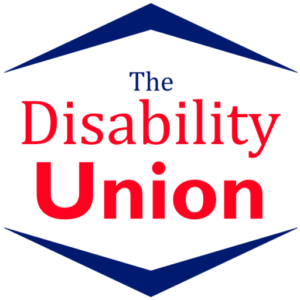
A few weeks ago, we discussed ways to make your website more accessible, but the access train doesn’t stop there! Print design, despite being a far older medium, is still not always accessible to everyone. The interesting thing is, mass-printed media was originally intended to be accessible to all. Gutenberg invented the printing press so that everyone could have access to information. Despite that goal, there are still things that can make it hard for people to read printed media. In this article, we will explore ways to help you make all your print design materials accessible for as many people as possible.
I know what you’re thinking: “I’ll just make the text bigger and call it a day! Bigger text is easier to see, so problem solved.” Well while there may be truth to that, bigger font is not where this discussion starts and ends. It may work for some people, but not everyone. In fact, font demands an article all on it’s own. Not only is the size of font a factor to consider, but so is font type, font color, and even the layout of the document as a whole.
Layout of the Page
Before we even begin to talk about font choice, we need to discuss how everything is laid out on the page. Yes, layout is important. Having a consistent look over your whole document, or even across all your documents, will make it easier for everyone to read and understand.
You may, after reading this article, believe that you are already doing most of these things. And that’s great! Keep going. Most of these things are so ingrained in formatting already that we don’t think twice about doing them. However, by knowing why and how these things are beneficial to others, you can go the extra mile and attempt to make your printed media that much more accessible.
Grid
Think back to your highschool or college textbooks, or even a newspaper or magazine. The text is laid out in columns, and it’s easy for your eye to follow what’s on the page. For people with visual disabilities, it can be difficult to know which part of a document to go to first. In this case, having a grid layout helps them know not only where to start reading, but also where to go next. There’s order. It’s (usually) the same from book to book, magazine to magazine, newspaper to newspaper, etc. etc. When you know where the information begins and how to navigate the page, you can focus on the information being given rather than the navigation itself.
Hierarchy
The hierarchy of information is particularly important in print media whose focus is to explain more complex ideas. If there’s a particular order something is supposed to go in, put the first or most important information at the top. This may seem like a no-brainer, but combining it with the grid to make the information flow better is important for someone who might already struggle reading the page. In the same way that having a consistent layout structure can help someone focus on the information being presented rather than where to go next, having a logical order to present your information in can help people focus on what they’re reading instead of connecting the dots and trying to make sense of it. Not only is this useful for people with visual impairments, but it is also useful for people who already have problems processing information via text.
Print Surface
This is something that I don’t think a lot of people would think about. Did you know that there are actually paper types that are more accessible than others? It’s true! Glossy paper, because it can cause a glare, often makes print design inaccessible for people with visual disabilities. There are two solutions to this issue. The first one may seem obvious, because it is: use paper with a matte finish. This will, naturally, get rid of the glare because the paper isn’t shiny. But, if you insist on having shiny paper for whatever reason, using a less-white paper will also reduce the glare.
Color
Color is a big way to make your printed media more accessible. About 5% of people experience some sort of colorblindness, with it affecting more men than women. The contrast of colors in your printed media can make it accessible, much like it can in web media. Having at least 70% difference in color value between your type and your background, as well as using complementary colors, can make a world of difference in terms of readability for everyone.
As an example, open up a word document and type a sentence. Now change the font color to a bright red and highlight it with a bright yellow. Hurts the eyes, doesn’t it? Can you imagine having to read a whole document with those colors? Having your text more vibrant than your background by at least 70% will make it exponentially easier to read for everyone.
If you’re unsure about the contrast of your print, the easiest way to check is to print it out in grayscale. If things seem to bleed together and you can’t tell where one thing stops and another starts, adjust your colors.
Much like how your website should be accessible, so should your printed media. Having larger font isn’t always enough. Layout and design are just as important, and should not outshine the information being presented. Using a grid layout that presents the information clearly, and in order, helps the reader focus on the information rather than where they need to go next. Having the right paper and color choices can change one’s ability to even see what’s on the page, no matter how well it’s laid out. In our next article, we’ll discuss how typeface and font size impacts how accessible a piece of media is.


